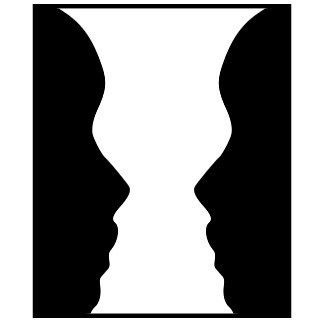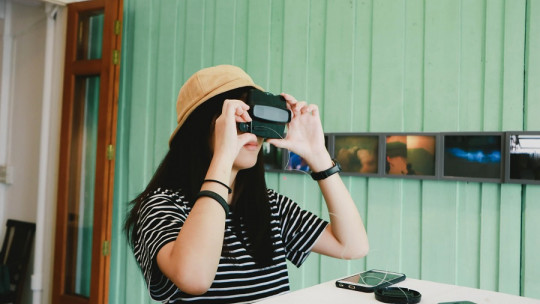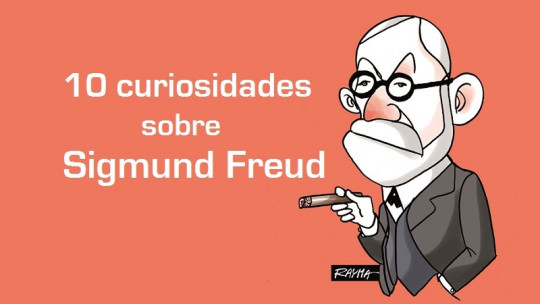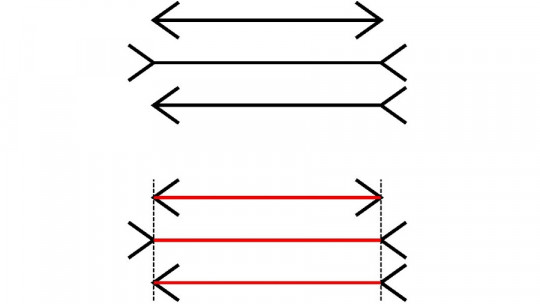Human perception is something that has been studied over many centuries, without finding an unequivocal answer to how human beings interpret the world based on the physical reality that surrounds us.
In this article we are going to see a few curiosities about human perception in addition to some interesting data about the way it originates in our mind and also psychological currents that tried to give it an explanation.
Curiosities about human perception
These are some curious facts about our way of perceiving things.
1. Perception is inside our mind
Throughout history, there has been debate about whether human beings see the world the way it really is, with several views on the matter. Today we know that reality and the way we perceive it do not coincide.
There is a material reality outside our body, but the way we receive it with our senses and process it, generating ideas and concepts associated with it, is something that varies greatly from person to person.
That is, and although it may seem surprising, Neither tastes, smells, tactile sensations, images nor sounds exist by themselves. They are the way we interpret things with different natures and physicochemical properties.
2. Perception has its limits
Related to the previous point, Human beings cannot know reality completely through their senses.
We have an example of this with sight, which has a spectrum of sensitivity and, at the brain level, we give each wavelength a certain color.
But this spectrum is limited, since human beings cannot perceive ultraviolet rays or infrared rays, making us unable to capture this type of reality.
3. Difference between perception and sensation
Contrary to what many people believe, sensation and perception are not synonymous words. There are also people who twist their meanings, referring to sensation with the definition of perception and vice versa.
Sensation is, basically, registering a physical stimulus through the senses. For example, a ray of a certain wavelength reaching the retina of the eye and being captured would fall within this concept.
On the other hand, Perception is referred to when, at the brain level, an interpretation is given to this type of stimuli captured in sensation.
In the previous case, it would be transforming the wavelength into a certain color. Color is something that really does not exist in nature.
4. Phases of perception
For perception to occur, four phases must occur:
5. What did the Gestalt think about perception?
According to the Gestalt psychological movement, the human mind has the ability to perceive different aspects as a complete entity. That is, the combination of different elements gives more than the sum of those parts.
The sensation would be to receive those parts separately, without giving them any type of value related to each other. Instead, with perception the meaning of these elements as a set would be obtained.
In the following points we very briefly describe some laws attributed to Gestalt that try to explain human perception.
6. Principle of proximity
We tend to perceive things that are close to each other as a group automatically.
7. Similarity principle
Elements that resemble each other are perceived as part of the same unit.
8. Figure-ground principle
The same visual stimulus cannot be perceived as background and figure at the same time. The background is everything that is not perceived in the figure.

9. Principle of continuity
If several objects are placed to form a flow, oriented towards a specific place or point, they will be perceived as a whole.
10. Closing principle
A figure is perceived more clearly the more closed its contour.

11. Motion parallax
The name motion parallax may not sound familiar to anyone, but it is a very common perceptual phenomenon in our day.
Let’s imagine that we are on a bus and we are on the highway. As the bus travels along its route, they pass trees and houses on either side, but they do so in the opposite direction, giving the sensation that they are moving in the opposite direction.
12. Perception can be a fiction
Optical illusions are a clear example of this. Believing everything you see is a big mistake, since Our senses can be wrong and, in turn, the brain can interpret things incorrectly what is being perceived.
13. Continuity of vision
Human beings blink. This is not a big surprise. However, we wonder how many times we do it a day? Do we keep an account? Are we even aware of it?
Surely, the vast majority would answer these questions with a resounding no, however, how is it possible that opening and closing our eyes, that is, stopping to see momentarily, is something that we do not notice happening, even though it happens?
A blink can last about 300 to 400 milliseconds, which means that visual information is interrupted for a very short period of time, but this also means stopping receiving visual stimulation. Although the sensation is interrupted, the perception is not. We continue to ‘see’, mentally speaking.
This is because during blinking a neural inhibitory mechanism is activated, which decreases the awareness that the eyes are kept closed and that, effectively, no visual information is received, thus contributing to the stability and continuity of vision.
14. Perception of spiciness
When we eat something spicy, that is, it has capsaicin, the brain does not interpret it as if it were a taste in itself, but rather as if the thermal sensors on the tongue were activating. That is why spiciness is associated with heat.
15. Smells and emotions
The main reason why smells are more easily associated with emotions is because the sensory centers of the sense of smell connect, through the olfactory nerve, directly to the most emotional part of the brain.
16. Colors affect depth perception
Cold colors are interpreted as distant, while warm colors are seen as closer. Also the more saturated colors are interpreted as closer to the observer.
17. Color can affect flavor
Perception arises from the combination of several physical stimuli that are given an interpretation at the brain level, as we were saying throughout the article.
A curious fact about it is how color can influence the taste of things, a technique which It is very used in marketing.
For example, the color of the cup when serving chocolate influences the perceived taste of this drink. This sweet liquid is not interpreted in the same way if it is served in a brown cup, according to the color of chocolate, than in a blue one, for example.









